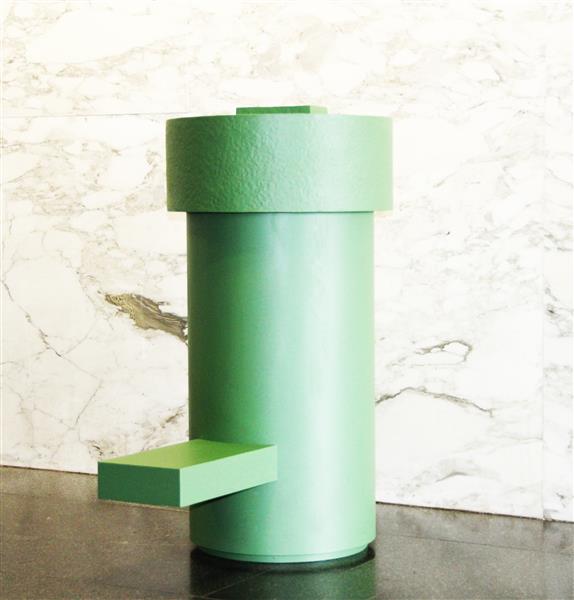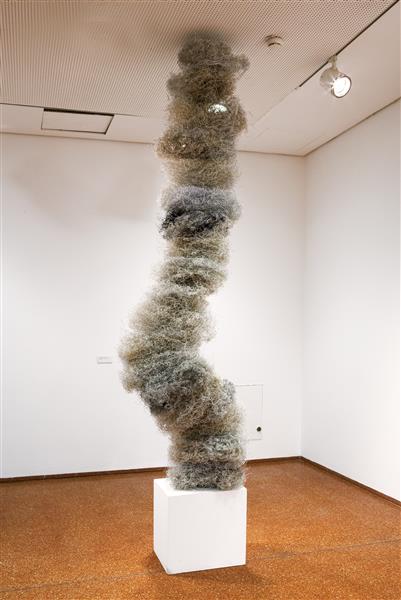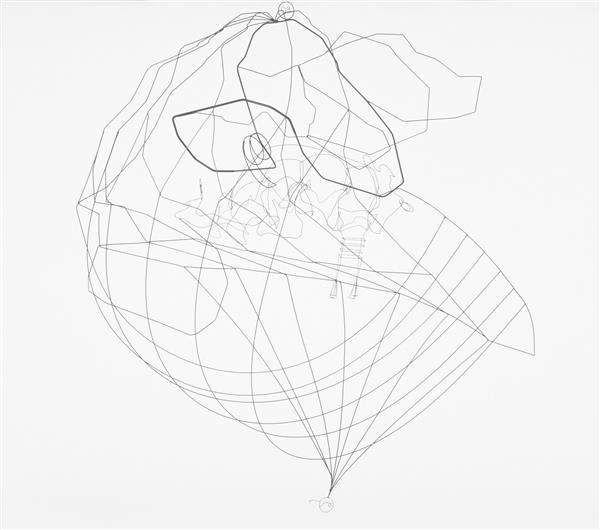Untitled
Werner Feiersinger
steel, aluminum and primer
98 × 50 × 80 cm
2004
Acquisition 2007
Inv. No. 0159
Werner Feiersinger has developed the clear and subtly witty language of form that has come to characterize his sculptures in the course of a profound exploration process spanning many years. One comes across occasional references to Modernism, yet his works are entirely devoid of the latter’s dogmatic approach. His art is about what exists and what is visible. Feiersinger’s geometric structures, composed of tubes and rods, are always reduced to the essential, although their equilibrium appears to be somehow upset. Regardless of the fact that they are generally dubbed Untitled, they (all too) readily invite associations with the world of concrete objects. A bedstead? A fence? A hydrant? A stove? A plank bed? A toolbox? But despite allusions to functionality and everyday life, these sculptures, which one could also call spatial puzzle pictures, always remain abstract and pleasantly hermetic. A catalog entry once mentioned Feiersinger’s “redundance.”1 The point is that Werner Feiersinger’s sculptures fathom the possibilities of abstraction and have no realistic intentions whatsoever.
When describing Feiersinger’s approaches, one inevitably comes up with paradoxes: austere post-minimalism interfered by narrative; cheerful purism; anonymity with an atmosphere; precisely set ambivalences; or industrial production radiating the ethos of craftsmanship. In spite of his using materials from mass production, Feiersinger works like a “classical” sculptor who is actively involved in all the phases of a work’s realization. Both his sculptures installed in public places (such as a “fence” on a pasture in Tyrol) and his work groups presented in galleries reveal how carefully and sensitively Feiersinger adapts his works to their surroundings. They are present, yet they never cry out loud.
A decisive factor for the opaque impression these shapes make is their coloring. As a rule, their surfaces are coated with matt-finish industrial paints; sometimes colors are used to make a surprising statement, yet they generally serve as camouflage: form and color as an open system – and an artist who pinpointedly works with unlimited possibilities at his disposal until he feels that a certain thing can only be this way and not any different.
Wolfgang Kos, 2011 (translation: Wolfgang Astelbauer)
1) Cf. Rainer Fuchs, “Die Gleichzeitigkeit des (Un-)Gleichen”, in: Werner Feiersinger: Skulpturen #2, Revolver Verlag, Frankfurt am Main 2006, 4–9, 4.
Continue readingExhibitions
Small Medium Large. Sculptures and Objects from the evn collection, evn sammlung, Maria Enzersdorf, 2022
Wallpaper #1, evn sammlung, Maria Enzersdorf, 2018
Publications
evn collection. 2006–2011, Cologne 2011, p. 94
Hard Rock Walzer. Contemporary Austrian Sculpture [4.11.2007 – 22.3.2008, Villa Manin, Udine], Udine 2007, p. 43


